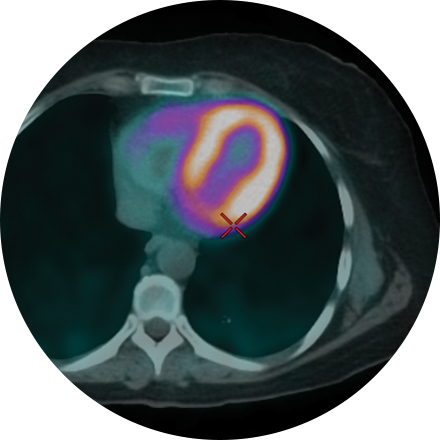
What is PET/CT?
PET/CT combines Positron Emission Tomography (PET) with Computed Tomography (CT) technology to aid in the diagnosis of cancer, determining the extent to which cancer has spread, and assessing how a patient is responding to treatment. In addition, PET can be used to evaluate patients with cardiac and neurological disorders, such as seizures and dementia.
PET/CT is a nuclear medicine test that uses special imaging cameras and a radioactive solution called FDG (Flurodeoxyglucose) to create very clear pictures of a cell’s metabolism and if it is abnormal. CT uses X-rays to provide detailed anatomical information, including the location, size and shape of lesions or tumors in the body. When both applications are combined together, the two techniques provide accurate and specific information about where abnormalities are located and whether they are cancerous.
When is PET/CT used?
The doctor may order this procedure to find:
Early coronary artery disease.
Damaged or non-viable heart muscle.
The effect of certain medications on the heart and brain.
Early degenerative brain changes and diseases, especially cognitive disorders.
Abnormal tissue or tumors.
Shifts in blood distribution.
Areas affected by a stroke or blood clot.
What happens during a PET/CT procedure?
The PET technician begins by injecting a low-level radioactive material (radiotracer) into your vein. If you are having a brain scan, we will ask you to wait in a quiet, dimly lit room to avoid stimulating your brain.
Approximately, 60-90 minutes after injection of the radiotracer, (the time needed to allow the solution to appropriately distribute itself through your body), you will lie down on an examining table that slides into the PET machine. The procedure will take about 45 minutes and you will be able to communicate with the technician during the procedure.
The PET scan will show the distribution of the radiotracer and what is happening in many of your internal organs. These images will allow the radiologist to determine if your organs are functioning appropriately.
What are the benefits and risks?
A PET/CT scan is a valuable tool in seeing changes at a cellular level and in diagnosing abnormalities. Rarely, a patient can have an allergic reaction to the chemical used in the scan, and we are equipped to handle that remote possibility immediately.
